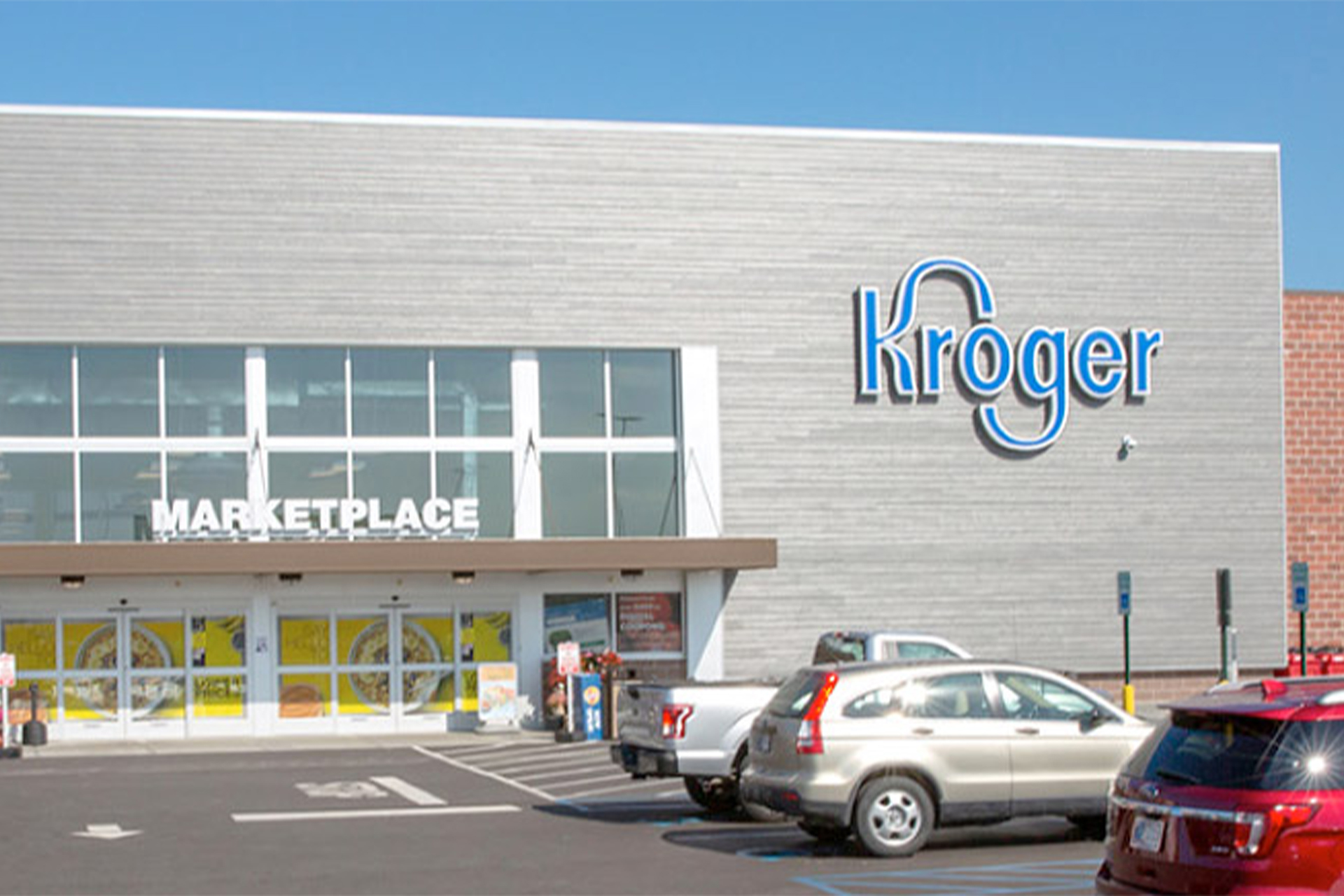This is the sixth installment of an exclusive HomePage News series examining the state of major home and housewares retailers entering the back half of 2021.
Read all installments of the HomePage News series: Big Retail Beyond 2021.
Kroger is in the process of a transformation from being the biggest supermarket operator in the United States to becoming the first truly omnichannel enterprise among the companies that have evolved from the established grocery sector in the United States.
The COVID-19 pandemic has made the actions Kroger has taken more apparent, particularly its quick shift into food pickup and acceleration of delivery services; and its desire to position itself as a food retailing leader emerged when it published online guidelines and advice for other businesses on how to deal with the coronavirus crisis. However, even as it propelled changes, the pandemic didn’t force changes on Kroger.
In a strategic repositioning implemented over several years, Kroger has been deliberate in analyzing its opportunity by looking at new ways to serve the consumer. To that end, Kroger has become the U.S. partner of Ocado, opening robotic fulfillment centers developed by that U.K. automated warehousing and food delivery specialist. In 2018, by partnering with Walgreens, Kroger put itself at the forefront of the recent trend toward retailer combinations, to leverage assets across the two operations, including by cross offerings of private–label products. In that way, Kroger and Walgreens have shared expertise that could enhance the ability of each to serve consumers.
Kroger has embraced change, even the catastrophic change of the pandemic, to redefine what it is as a company and retailer.
Although it had to deal with a range of issues associated with consumer and employee health, Kroger was well able to navigate the COVID-19 pandemic successfully.
Ethan Chernofsky, vice president, marketing at Placer.ai, said store visit data indicated that Kroger’s moves during the pandemic had made an impression on consumers.
Kroger was one of the stronger performers in terms of offline visits during the pandemic relative to the wider grocery sector. A big part of this was their alignment with key trends during that time period. They are a traditional grocer that benefits from their proximity to key audiences and is perceived as a one-stop-shop supermarket, two elements that aligned with early COVID shopping trends.
– Ethan Chernofsky, VP/Marketing, Placer.ai
“Kroger was one of the stronger performers in terms of offline visits during the pandemic relative to the wider grocery sector,” he said. “A big part of this was their alignment with key trends during that time period. They are a traditional grocer that benefits from their proximity to key audiences and is perceived as a one-stop-shop supermarket, two elements that aligned with early COVID shopping trends. The impressive element has been that their visits have already returned to growth when compared to 2019. This is a powerful indication that the brand succeeded in creating lasting relationships that will benefit them moving forward.”
Chernofsky said summer customer traffic numbers were impressive.
“They have done very well with visits, up 2.4% in June and 7.8% in July compared to the equivalent months in 2019,” he said. “This is a further sign that the brand succeeded not just in taking advantage of a short–term bump, but in turning that trend alignment into longer term strength.”
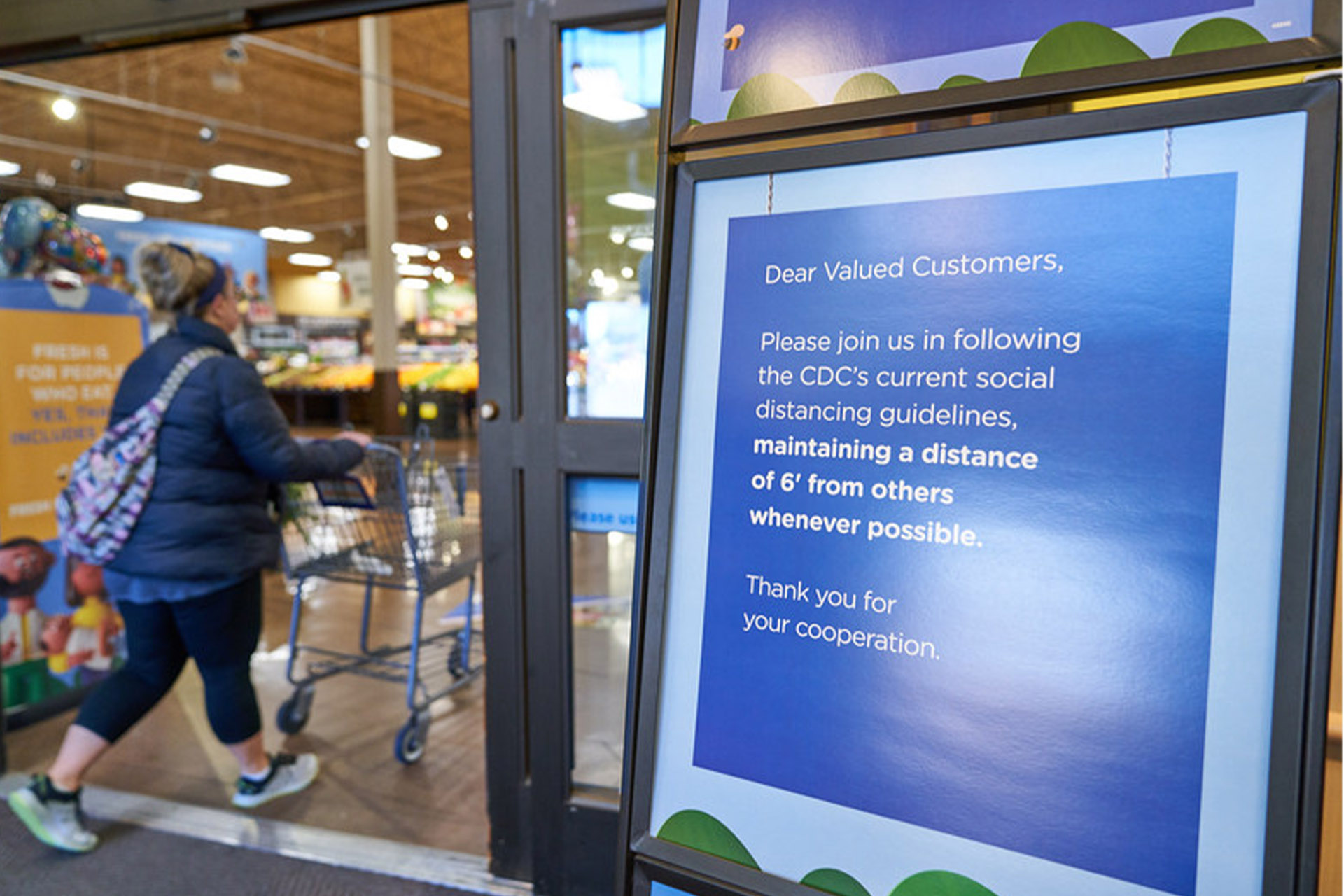
Although the pandemic distorted Kroger’s second-quarter financial results compared to the year before, the numbers still demonstrate that the company had made significant gains. For instance, earnings came in at 61 cents per share versus $1.03 in the year-before period but adjusted for one–time charges, earnings per share were 80 cents versus 73 cents in the year-prior quarter. Operating profit came in at $839 million versus $820 million in the period a year earlier.
Comparisons to second quarter 2019 are apt given that they can give a better picture of progress outside the immediate effects of the coronavirus crisis in 2020. So, in the 2019 second quarter, earnings per share were 37 cents, adjusted earnings per share were 44 cents and operating profit was $559 million. Identical store sales in the 2021 second quarter slipped 0.6% versus the 2020 period but gained 14% on a two–year stacked basis. Kroger second-quarter adjusted earnings per share beat a MarketBeat-published analyst average estimate of 64 cents.
After the pandemic hit, Kroger doubled down on something that it already had done in different ways, including participation in industry seminars, sharing internal learnings it considered actionable by others, in effect sharing how the company regarded market developments. Then in April of 2020, Kroger issued “Sharing What We’ve Learned: A Blueprint for Businesses” to help other companies plan how to reopen their operations at that point when the COVID-19 pandemic permitted.
It included recommendations that retailers, restaurants and food service companies, as well as manufacturers, logistics operations, distribution centers and other operations, could consider while crafting plans to establish safe work environments through the pandemic risk and beyond
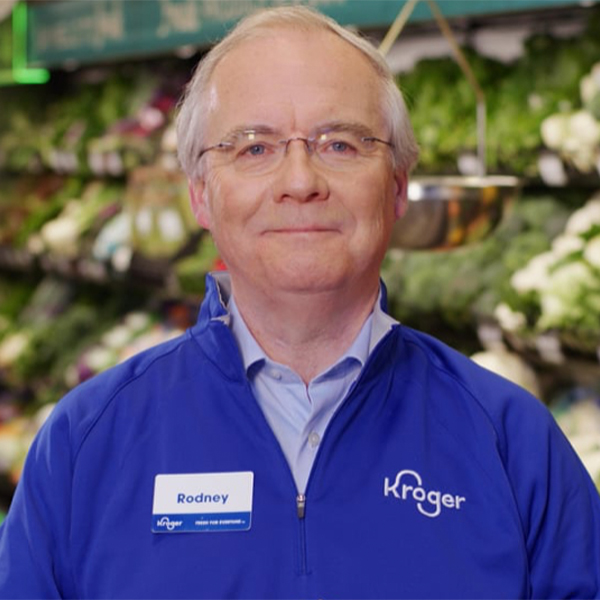
At the time, Kroger chairman and CEO Rodney McMullen said that with close to 2,800 grocery stores under multiple banners ranging from upmarket Harris Teeter to more traditional Ralph’s to value Food 4 Less, 35 manufacturing plants, 44 distribution centers and 460,000 associates across the country, Kroger had a developed a depth of experience in dealing with the pandemic, and had taken on a responsibility to help businesses across the United States cope with and recover from the coronavirus crisis and the disruptions it caused.
Kroger offered its advice to a wide range of businesses by virtue of its own position in the marketplace and effectively assumed a leadership position in the supermarket sector.
The high profile it has taken is to a point: Despite its operation of the Fred Meyer supercenter operation, acquired in 1998, and of marketplace and food and drug format stores that are proportionately higher in nonfood sales than traditional grocery store operations, Kroger has a huge investment in the supermarket channel and format. Kroger has an interest in keeping that channel viable and in seeing it adapt to the changing consumer. In its coronavirus-related and other initiatives, such as the work of its Zero Hunger Zero Waste Foundation, Kroger has highlighted supermarkets as neighborhood institutions that can use their assets to serve community needs and preferences with the flexibility to do so better than many other retailers.
Few major retailer executives take their perspective out on the road or otherwise make it known, as often as McMullen. At the recently completed GroceryShop event in Las Vegas, he expressed a conviction that emphasizing fresh food and expanding digital operations is central to the evolution of supermarkets.
In the opening keynote address, dubbed “Kroger Delivers the Future of Grocery Shopping Now,” McMullen emphasized that the company is executing its core strategy by focusing on creating innovative solutions for customers, continually improving the workplace for associates and becoming a more sustainable operation for the general good.
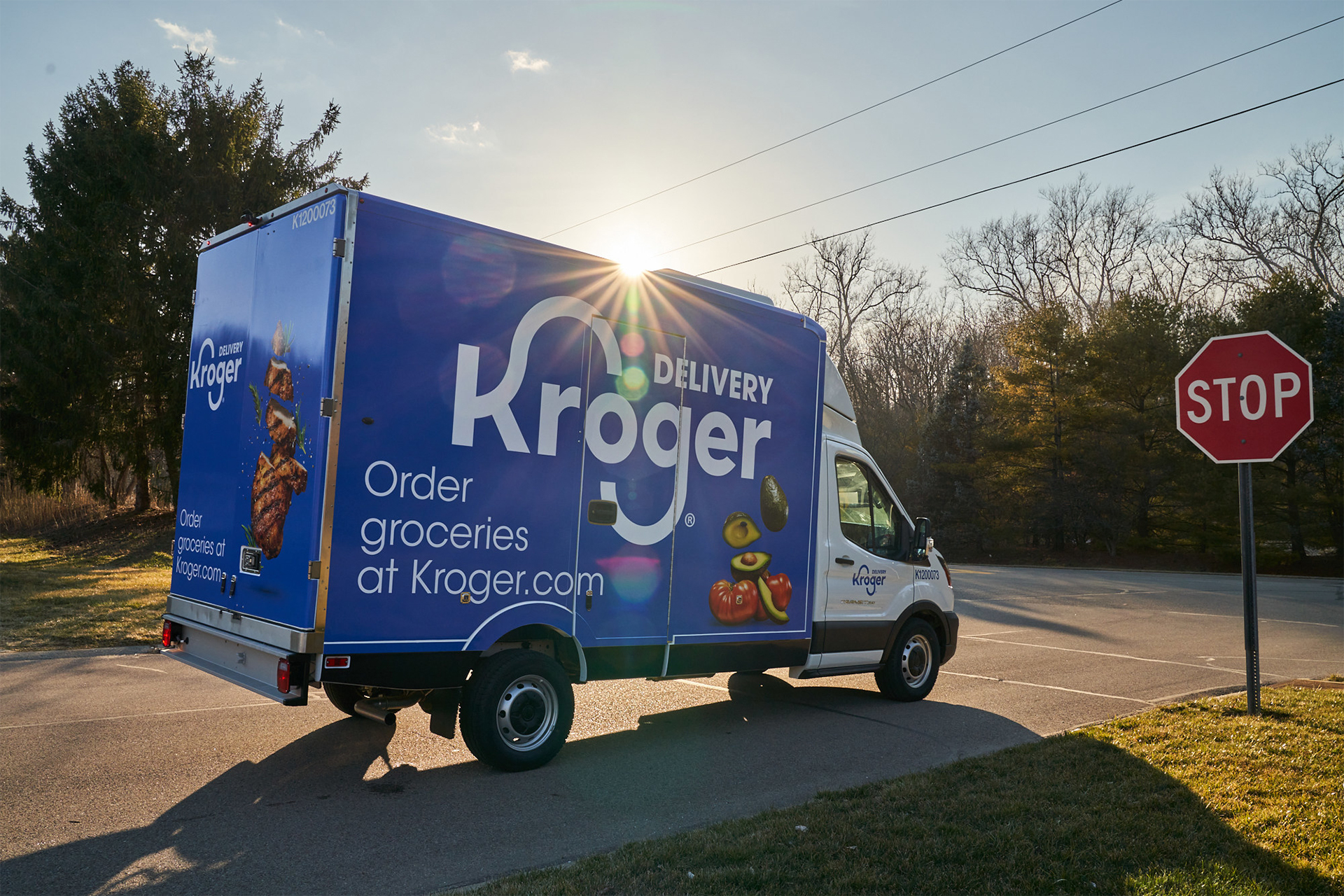
“Kroger’s ability to proactively and strategically leverage our assets has positioned us to lead and thrive,” he said.
McMullen envisions a model where customers will not have to compromise on freshness, quality, selection, pricing, convenience or speed whether they want groceries now or tomorrow via Kroger stores or e-commerce. Even as he spoke at GroceryShop on September 19, Kroger Delivery Now rolled out. Another delivery collaboration, this with Instacart, Kroger Delivery Now is an as-fast-as-30-minute service that works by using the company’s network of stores and Instacart’s on-demand fulfillment network.
Through initiatives to bring its operations to consumers in new ways, Kroger has an opportunity to better serve, and more deeply sell existing customers and to enter new territories where it doesn’t have stores. At GroceryShop, McMullen said a new Kroger Delivery operation in Florida has ramped up faster than expected, unlocking additional ways of executing and resulting in high customer repeat rates and Net Promoter scores.
Mara Devitt, senior partner at consultancy McMillan Doolittle, said McMullen’s remarks at GroceryShop threw a spotlight on what he identified as the strength of the Kroger business ecosystem including how it retained customers in the pandemic.
Devitt indicated a few of the capabilities McMullen discussed “are going to be key to developing the relationships with current customers as well as acquiring new customers.”
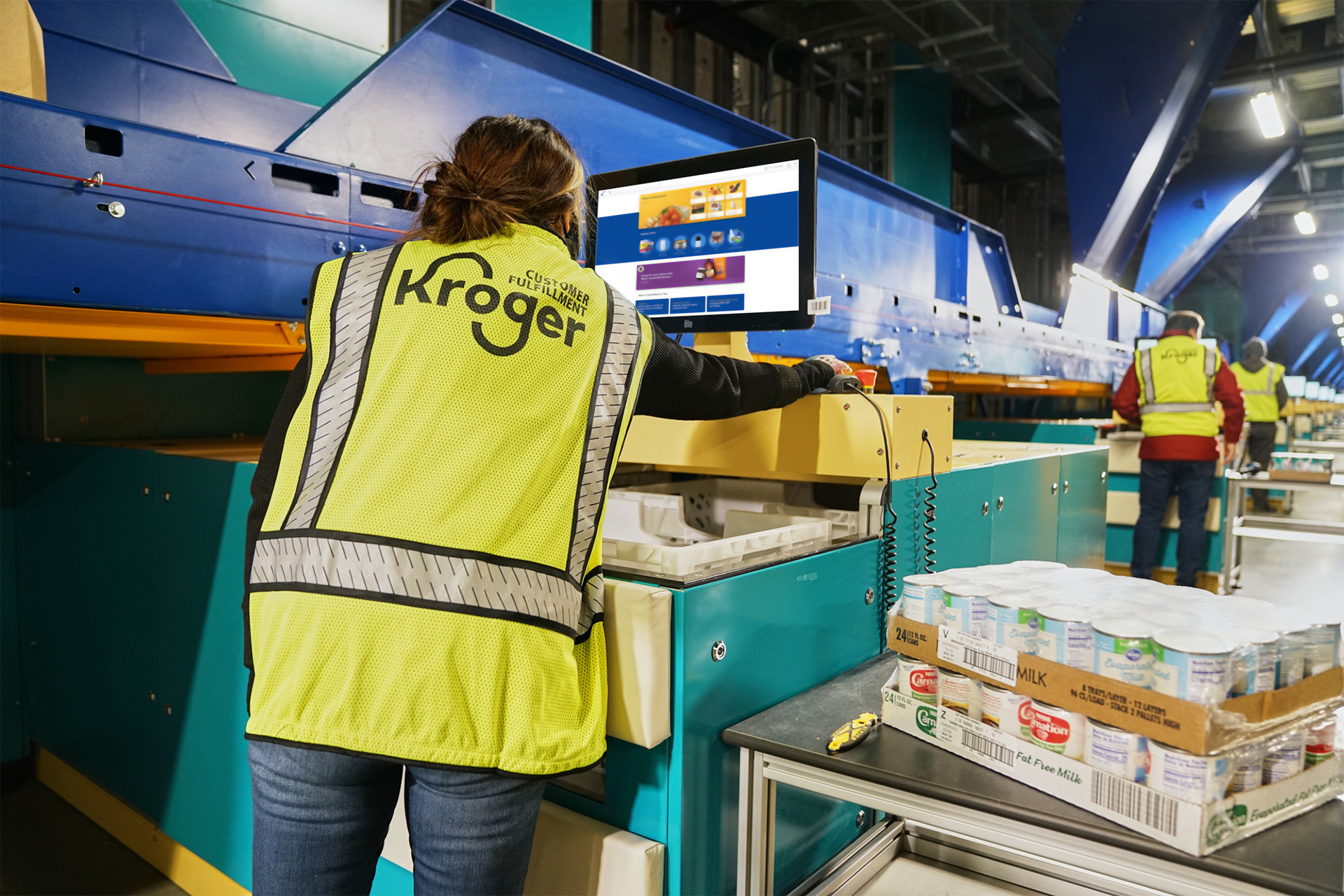
Among them, she said, the Kroger Delivery initiative “addresses their current relatively weak market share in the quick/convenience shopping occasion. The Customer Fulfillment Centers with Ocado will provide access to new customers, as they can stand these up in new markets where they don’t have a Kroger store today. They are also testing a Hometown initiative to offer pick-up points in more rural areas, to effectively compete with dollar stores, offering a Kroger assortment, although a more limited one, to consumers.”
Kroger broke ground on its first Ocado robotic customer fulfillment center in Monroe, Ohio, during 2019 and immediately planned a network of some 20 CFCs to create a seamless customer experience with additional sites initially selected in the Central Florida and the Mid-Atlantic markets. Kroger invested $55 million to build its first Ocado fulfillment center, or shed, to use Ocado terminology, sized at 335,000 square feet.
In opening its first shed in Florida, Kroger effectively reopened the Sunshine State as a territory. It had gained a foothold in Florida by investing in Lucky Markets. The money received allowed Lucky to rapidly expand, including in Florida. As 2021 began, Kroger announced a decision to disinvest, which resulted in all but one of the 21 Lucky Stores in the state closing.
In June, Kroger announced the opening of the Ocado-powered CFC in Groveland, Florida. As such, Kroger reentered the Florida market as a first-time direct participant via an e-commerce delivery service that, it pointed out, combines vertical integration, machine learning and robotics with affordable, friendly, and fast delivery of grocery items and fresh food.
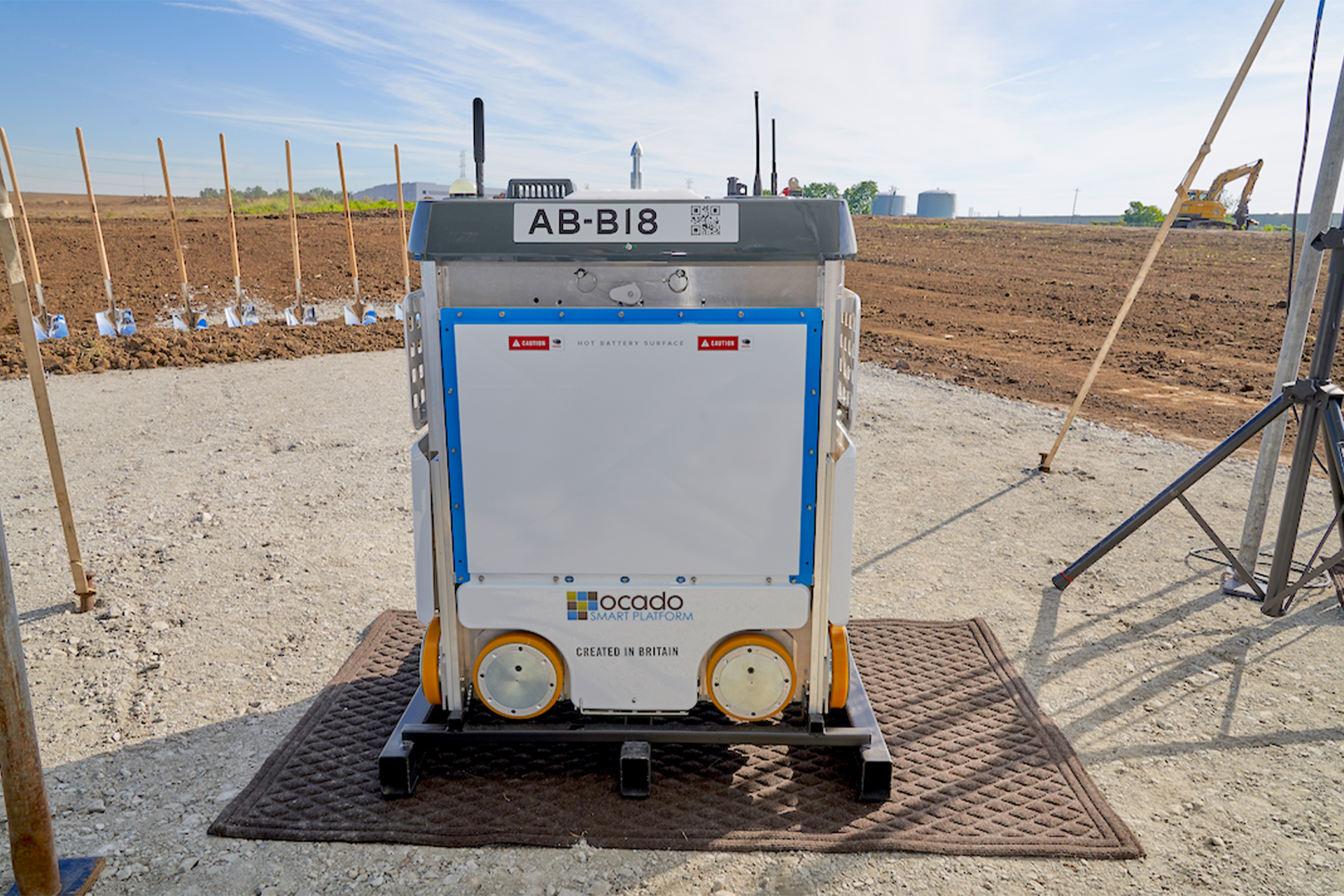
In a second-quarter conference call, McMullen emphasized the success Kroger is enjoying with its Florida e-commerce business.
“If you look in Florida, we are tracking ahead of where we thought we would be at this point. And the thing that I’m especially proud of our teams in Florida for is our Net Promoter Scores are incredibly strong,” he said.
McMullen said the Central Florida and Ohio delivery operations are creating new opportunities for Kroger, providing the ability to reach new customers in Florida and enhancing the customer proposition in Ohio, where it operates physical stores, to maximize opportunities alongside existing digital offerings.
In October, Kroger announced it would be expanding Kroger Delivery to the Northeast, the rare U.S. region where it has no store presence. A Kroger spokesperson told HomePage News the company’s real estate team is looking for a suitable location for a shed but, wherever the fulfillment center might be, it would “be servicing New York, New Jersey and Connecticut.”
Although initiatives such as delivery get the most attention, Kroger has been developing expanded capabilities for years. Since Fred Meyer’s acquisition in 1998, the company has been updating and refining its general merchandise strategies. As Chernofsky noted, the company’s one-stop shopping reputation, even in formats closer to traditional supermarkets versus marketplace or Fred Meyer, can prompt consumers to see Kroger as a broader resource than they do some of the supermarket competition, a point of view that helped in the pandemic when consumers engage in fewer deeper shopping trips as a disease avoidance strategy.
Because it has a sophisticated approach to general merchandise, Kroger is among those supermarket operators that have been able to launch and sustain initiatives in housewares and other key non-foods categories, and not just as a simple convenience purchase location. Kroger has encouraged consumers to look at it as competitive with cross-channel rivals as well as better than other supermarkets when it comes to general merchandise.
Because it has a sophisticated approach to general merchandise, Kroger is among those supermarket operators that have been able to launch and sustain initiatives in housewares and other key non-foods categories, and not just as a simple convenience purchase location. Kroger has encouraged consumers to look at it as competitive with cross-channel rivals as well as better than other supermarkets when it comes to general merchandise.
David Nicklin, senior vice president, marketing and licensing, Gibson Homewares, said the company’s Market Stewart program has found a home in the supermarket channel and a firm one in Kroger operations, something that the COVID-19 pandemic further facilitated.
“The Martha Stewart program is well represented in supermarkets, including the Kroger family of supermarkets,” he said. “Gibson has planograms of at least four to eight feet at 500 Kroger doors nationwide. Of those, 120 are planograms at the expansive Fred Meyer stores. Overall, the supermarket space has presented a lot of new opportunities for Gibson during and since the pandemic.”
Nicklin pointed out that supermarkets aren’t necessarily as flexible in their approach to merchandising housewares and other nonfoods as their cross-channel competitors, which can be a challenge. However, the diversity of Kroger formats, and Fred Meyer in particular, give it an understanding of non-foods that it can apply to other banners as it chooses. The digital dimension extends Kroger’s opportunity to capitalize on its understanding.
“At Fred Meyer, the Martha Stewart line has its own section that features a multitude of merchandise from kitchenware to dinnerware, flatware, etc.,” Nicklin said. “The universal appeal of Martha Stewart carries a lot of weight on Kroger shelves. Her brand does well all over despite the regional and seasonal differences that define most markets.”
Nicklin added that Gibson saw consumers turn to the supermarket channel to find housewares in the pandemic. As they move forward, those supermarkets that came to recognize they need to make adaptations in their approach to non-foods will likely see more long-term, post-pandemic benefits, and Kroger, with the flexibility and knowledge, is in a position to drive general merchandise sales. Still, supermarkets including Kroger face a challenge when it comes to consumer perceptions of them as an effective destination for home merchandise.
“A remaining hurdle in the surging supermarket sector is a problem of perception: many people still don’t go to Ralph’s or Food 4 Less seeking dinnerware,” Gibson’s Nicklin says. “Supermarket purchases of these items tend to be more impulsive. These consumers like to buy single, unboxed items at the right price point.”
Supermarkets can make changes to the basic floorplan of at least some of their stores or develop formats designed to carry more non-foods. Kroger has done both. However, online operations open new opportunities to the extent that consumers continue to do more digital shopping for delivery or pickup. Kroger has made a study of its core consumers via its loyalty program and other information gathering and is among those supermarket operators with the data to identify and deliver on sales opportunities through vehicles such as digital coupons and personalized promotions. In addition, it is building out its Kroger Precision Marketing in-store media operations, which can be an opportunity for the retailer and those vendors who want to grow with the company and the supermarket channel.
Gibson’s Nicklin said,
“E-commerce and the various online arms of traditional brick-and-mortar retailers have become an essential feature of any successful omnichannel strategy post-2020. Online accounted for nearly a quarter of home furnishing purchases last year. But e-commerce remains an interesting and evolving animal in the supermarket space. Except for Walmart, which had the biggest head start in the e-commerce game with the launch of Walmart.com back in 2009, there are some stubborn challenges to streamlining the online shopping experience in supermarkets, particularly when it comes to general merchandise. Shipping fragile plates and mugs is relatively pricey, for instance, but most brick-and-mortar retailers strive to keep pricing consistent between items bought off the shelf and purchased online. Just like everyone in these unprecedented times, Gibson is testing creative solutions to better capitalize upon emerging opportunities. We’re trying various drop-ship options to fulfill e-commerce orders at the desired price point. When the order is fulfilled by the retailer, we’ve created sturdy remailer boxes with colorful branding and protective packaging.”
As such, Kroger, as perhaps the most aggressive major supermarket operator in the online space and with greater general merchandise experience than its in-channel rivals, is positioned to push housewares and other non-food sales, and establish them as a more significant revenue stream
With all Kroger has done, Marsha Everton, principal, corporate director and advisor at market researcher The AIMsights Group, says Kroger is in great shape to take advantage of emerging opportunities in the marketplace.
“Kroger is interesting because with its loyalty program and moves to add more automation and enhance delivery, even drone delivery, the company seems to be the supermarket operator that’s going to transform its relationship with consumers,” she said.
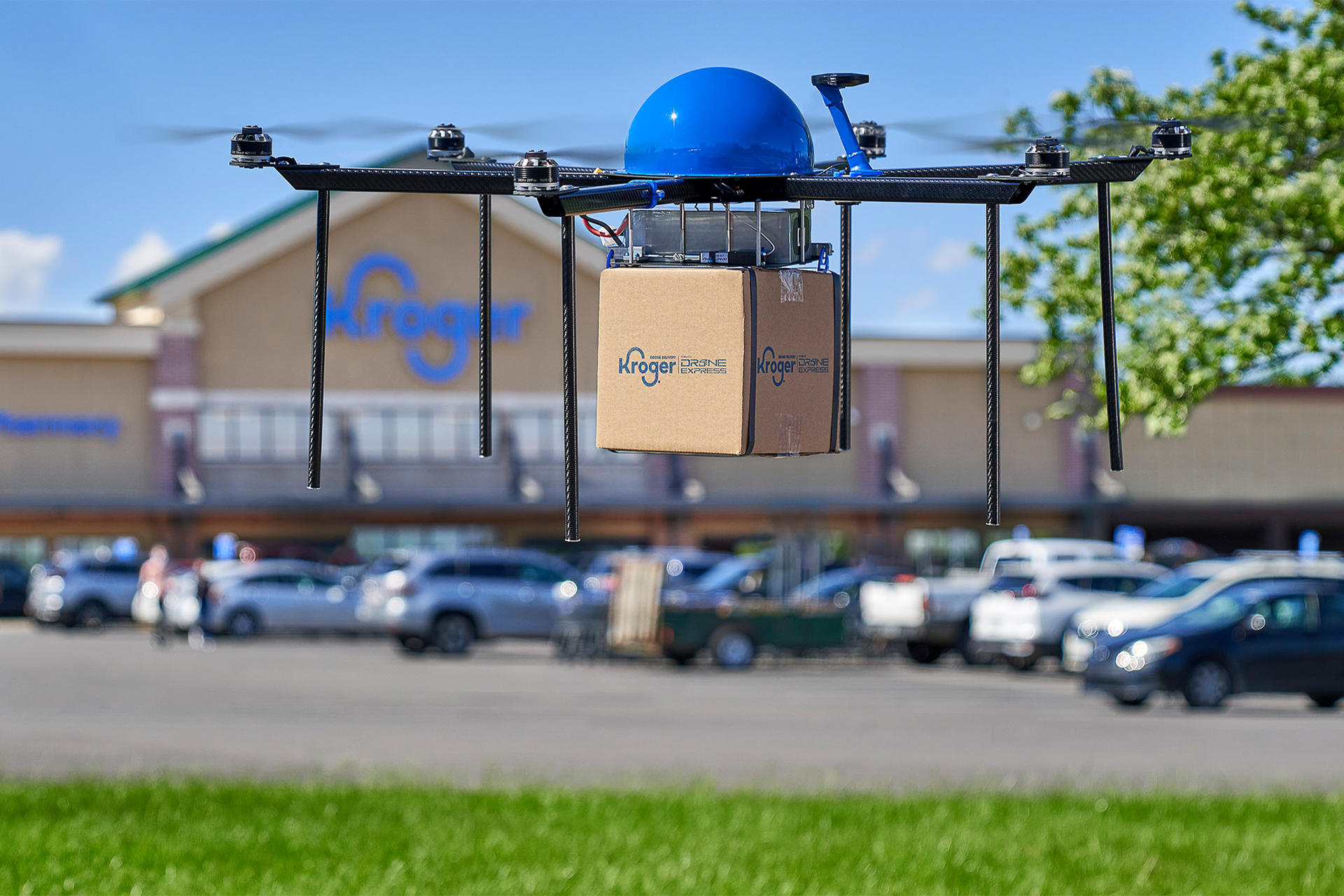
But does that put it in a better position relative to supermarkets who are lagging around the rest of retail in modernizing? The question is relevant today because cross-channel competition has encroached so much on supermarket turf. Although not obsolete by any means, supermarkets face emerging consumers who have grown up with more abundant choices in how they can purchase groceries and those nonfoods they expect to find alongside. So, supermarkets enjoy less of a moat when it comes to staving off the cross-channel competition, particularly as the advantages they once enjoyed in terms of prices on staple items have evaporated.
Their entrenchment within neighborhoods may be the most important advantage they enjoy and even that is being challenged by alternative grocers, dollar stores, off–pricers that carry food and smaller format vehicles developed by mass merchants, not to mention delivery operations. All have their own take on grocery and nonfoods including housewares, and all try to make purchasing via their operation attractive generally by developing a focused proposition to the consumer that often starts with a specific consumer base in mind but then gets widely marketed to achieve broader popularity.
As such, supermarkets need to reconfigure to serve consumers in the ways they want. Today, it’s not about consumers conforming to the store. It’s about the retailer conforming to consumers, their needs and their lifestyle preferences.
“Traditional supermarkets are important and still provide a cost-effective one-stop shopping experience for groceries for a large group of consumers,” Everton said but noted that alternatives are abundant and have their own attractions. “The super price-conscious shopper will go to Walmart. Whole Foods is a ‘treat.’ Trader Joe’s is fun, funky [with] well-priced items, not everything that you need.”
Traditional supermarkets are important and still provide a cost-effective one-stop shopping experience for groceries for a large group of consumers,” Everton said but noted that alternatives are abundant and have their own attractions. “The super price-conscious shopper will go to Walmart. Whole Foods is a ‘treat.’ Trader Joe’s is fun, funky [with] well-priced items, not everything that you need.
Despite all the additional operations, Kroger has an advantage at the core, Everton said, because its willingness to embrace change has allowed the company to steer the core business in a direction consistent with market development, especially since it began to implement its Restocking Kroger initiative. At the same time, she said, it hasn’t compromised the critical core of its supermarket operations, which means it has the opportunity to build out from a thriving operation and build incremental business.
“Kroger’s is a leader in providing an extensive high-quality assortment and merchandising, all at reasonable prices and more important than the loyalty, automation and delivery programs,” she says. “They make it fun to shop, and you can get everything you need with one trip.”
The Delta variant of COVID-19 has reiterated Kroger’s value to consumers who have adopted pandemic-peak behaviors of shopping less frequently, deeper and closer to home, and may help it build out delivery faster. Among them Millennials, once were least married to traditional supermarkets for their food needs and most enthusiastic about delivery in general, who are acting on the renewed pandemic concerns are getting a second dose of Kroger.
“With the increased concern about COVID infection rates, the one-stop shopping experience increases in importance again,” Everton said.

